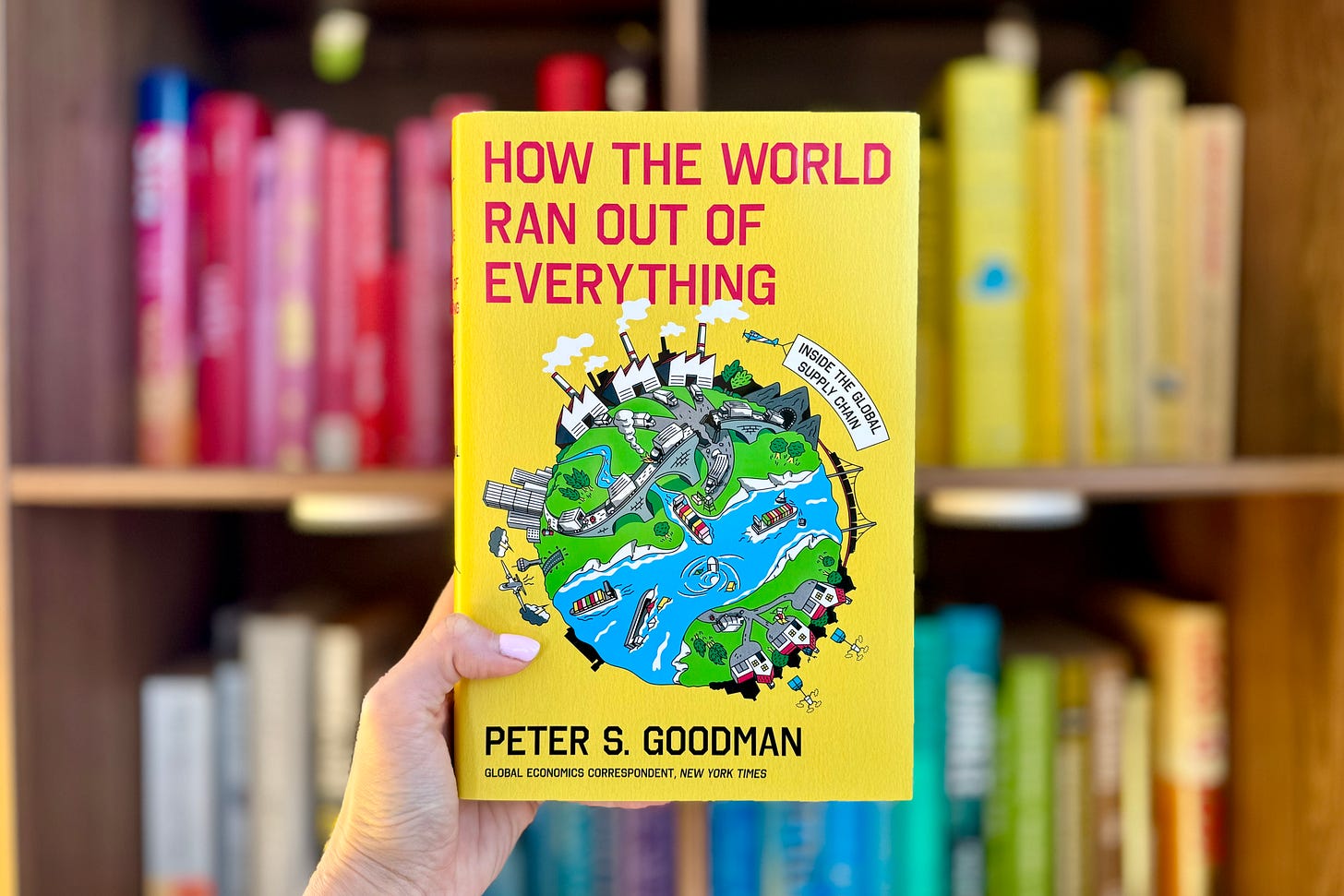How the world ran out of everything
Peter S. Goodman's lively but far-reaching book examines how modern supply chains became extremely complex, extremely cheap, and extremely fragile.
Author: Peter S. Goodman
Subject: How global supply chains work (pre-, during, and post-pandemic)
Good for: Those who (like me) really don’t know much about how supply chains work (when you actually think about it)
Rating: 4.5/5
Favourite quote: “...the supply chain is typically discussed as separate from the rest of commercial existence… This is wrong. What we refer to as the supply chain is inextricable from the broader economy.”
Summary and review
Few have the headspace to wonder how the sugar in their morning coffee came to be cut, stripped, chopped, crushed, boiled, evaporated, filtered, dried, packed, shipped, and ready for them on the shelf of their local grocery store. We didn’t need to think about the hands that stripped the leaves from the cane, or the forklift driver that loaded it onto the truck, or the crew members who spent weeks or months on board with it as it chugged across oceans. We didn’t need to think about any of this, because it worked. That is, until it didn’t.
This lively but far-reaching book, How the World Ran Out of Everything, examines how modern supply chains became extremely complex and extremely cheap, and how that made them (unbeknownst to most) extremely fragile.
In the wake of the pandemic, the people responsible for the now-exposed supply chains are promising change. But better supply chains will require massive shifts in the world of commerce — but the incentives haven’t changed.
The big takeaway
The glue in the global supply chain is the people in the factories and fields, in the trucks and tankers, in the docks and warehouses (practically every problem is, at heart, a people problem).
“So long as normalcy continues to depend on the desperation of working people, the supply chain is perpetually at risk of descending into chaos.”
At the same time, the biggest threat to global supply chains is also a people problem: unregulated greed.
“Restoring resilience, yielding a supply chain that is truly reliable, requires a whole other level of change. It demands a redrawing of the bargain between labor and shareholders. Ordinary workers must regain a critical element that has long been in chronically short supply: the means of earning a decent living.”
Mental models
Incentives
We can thank Charlie Munger for our renewed focus on incentives in the world of mental models. Incentives are basically how the world works — they are the cause of human motivation and, therefore, the most likely explanation whenever things succeed (and fail). If you want to understand why something happened, look at the incentives behind it. If you want to design something that won’t fail, think very hard about incentives — including their secondary and tertiary consequences.
Second-order thinking
When evaluating their options, most people don’t spend nearly enough time on the consequences of each. When they do, they typically stop at the most obvious, and fail to consider how those consequences have consequences — and so on, and so on. A lack of second-order thinking is why so many government interventions fail and why hindsight always seems obvious.
Systems thinking
Systems thinking sees a lot of overlap with second-order thinking, but comes more full-circle. Systems thinkers see the world as a complex network of interrelated parts, rather than individual people or projects. A change in one area leads to a change in another area, just as a problem in one place often originates elsewhere. Systems thinkers think in terms of cause and effect, not problem/solution.
Diversification
A popular strategy from investing to family planning — it is usually a good idea not to have all your eggs in one basket. Diversification is not a foolproof strategy, and it is not always the path to the top (ask Buffett and Munger about that). But it is often a failsafe for avoiding total collapse.
“Will this last?”
A new mental model that I don’t have a better name for yet. So much of our current reality is accepted as if things have always and will always be this way — yet few things truly last this long. The danger is in not understanding what came before, and thus in not understanding that the current reality may not last. For example, in the case of CCP-subsidized shipping costs (something most don’t even know about), the question for companies reliant on cheap shipping should ask: Will this last?
Did you read How the World Ran Out of Everything? Let me know what you thought.
Relevant reads:
The World for Sale: Money, Power, and the Traders Who Barter the Earth’s Resources (Javier Blas & Jack Farchy, 2022)
How the World Really Works: A Scientist’s Guide to Our Past, Present, and Future (Vaclav Smil, 2022)



